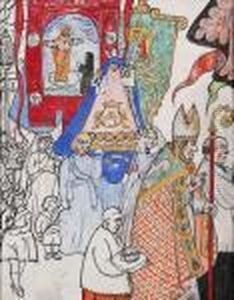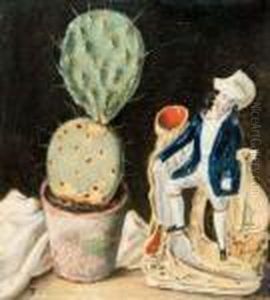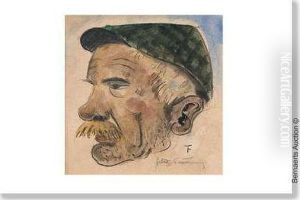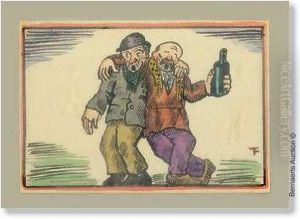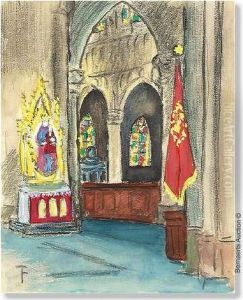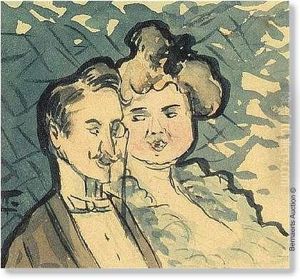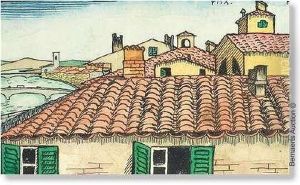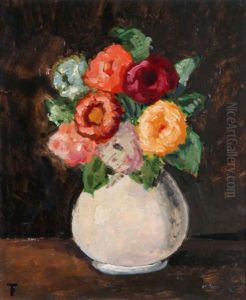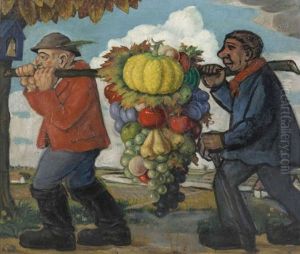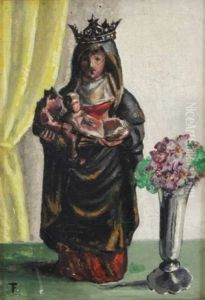Felix Timmermans Paintings
Felix Timmermans, born Leopold Maximiliaan Felix Timmermans on July 5, 1886, in Lier, Belgium, was a prolific Flemish writer, poet, and artist known for his contributions to Flemish literature and his vivid portrayal of peasant life in Belgium. His work, characterized by a blend of simplicity, humor, and a deep sense of humanity, made him one of the most beloved Flemish writers of the early 20th century. Timmermans' talent spanned across various mediums, including painting and drawing, but he is best remembered for his literary works which often drew from his deep connection to his hometown of Lier.
Timmermans' literary career began to take shape in the early 1900s, with his first notable success coming with the publication of 'Pallieter' in 1916. This novel, celebrating life and nature, became immensely popular in Belgium and was translated into several languages, establishing Timmermans' reputation internationally. His ability to evoke the beauty of the Flemish countryside and the joys and sorrows of its inhabitants resonated with readers around the world. Throughout his career, Timmermans wrote novels, short stories, plays, poetry, and autobiographical works, often illustrating his books himself with a distinctive, whimsical style.
Despite the local focus of his work, Timmermans was not insulated from the broader currents of European culture and history. He lived through both World Wars, experiences that impacted his writing and personal life. During World War II, his perceived collaboration with the German occupiers led to controversy, casting a shadow over his legacy in the years immediately following the war. However, the enduring appeal of his work, characterized by its warmth, wit, and humanity, has contributed to a reevaluation of his life and contributions to Belgian and Flemish culture.
Felix Timmermans passed away on January 24, 1947, in Lier. Today, he is remembered not only for his literary and artistic output but also for his role in shaping the Flemish identity through his celebration of the regional culture and landscape. His home in Lier has been turned into a museum dedicated to his life and work, ensuring that his legacy continues to inspire and enchant new generations.
